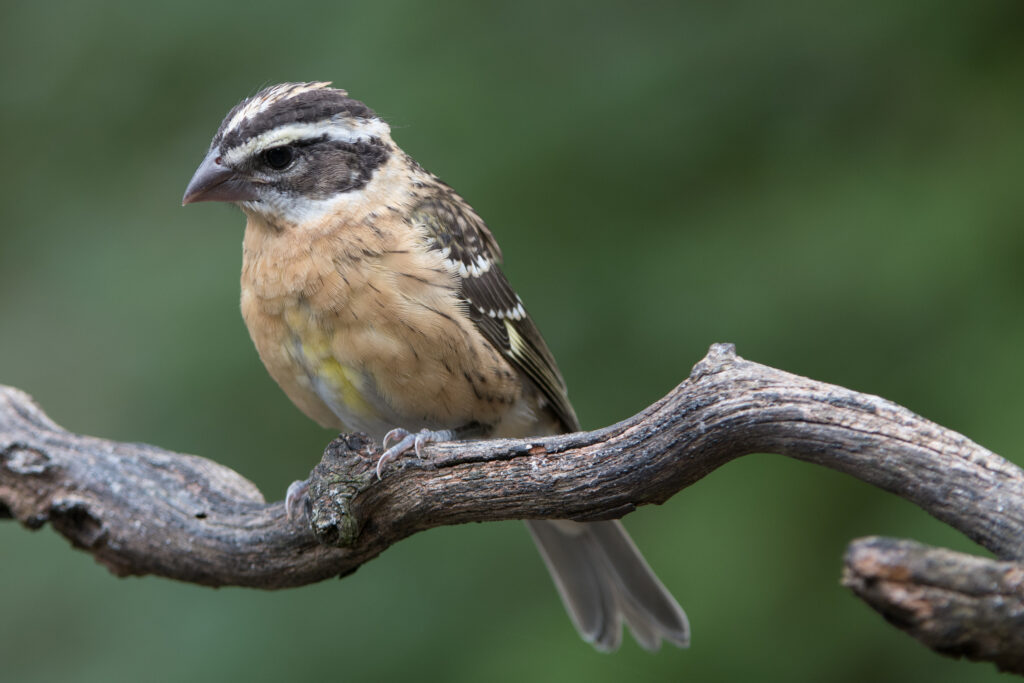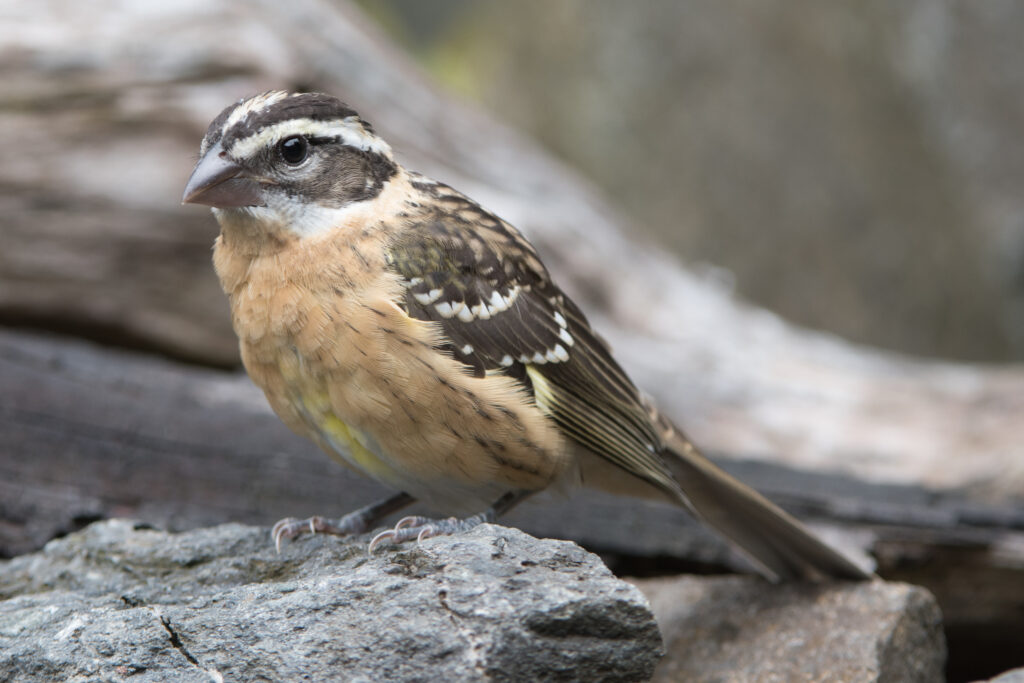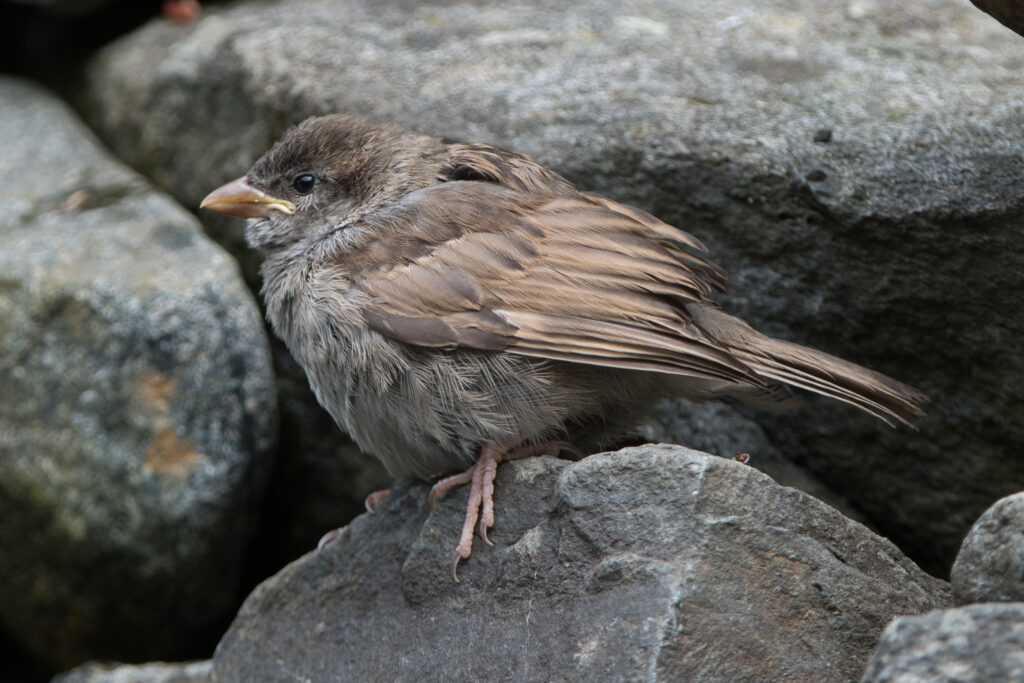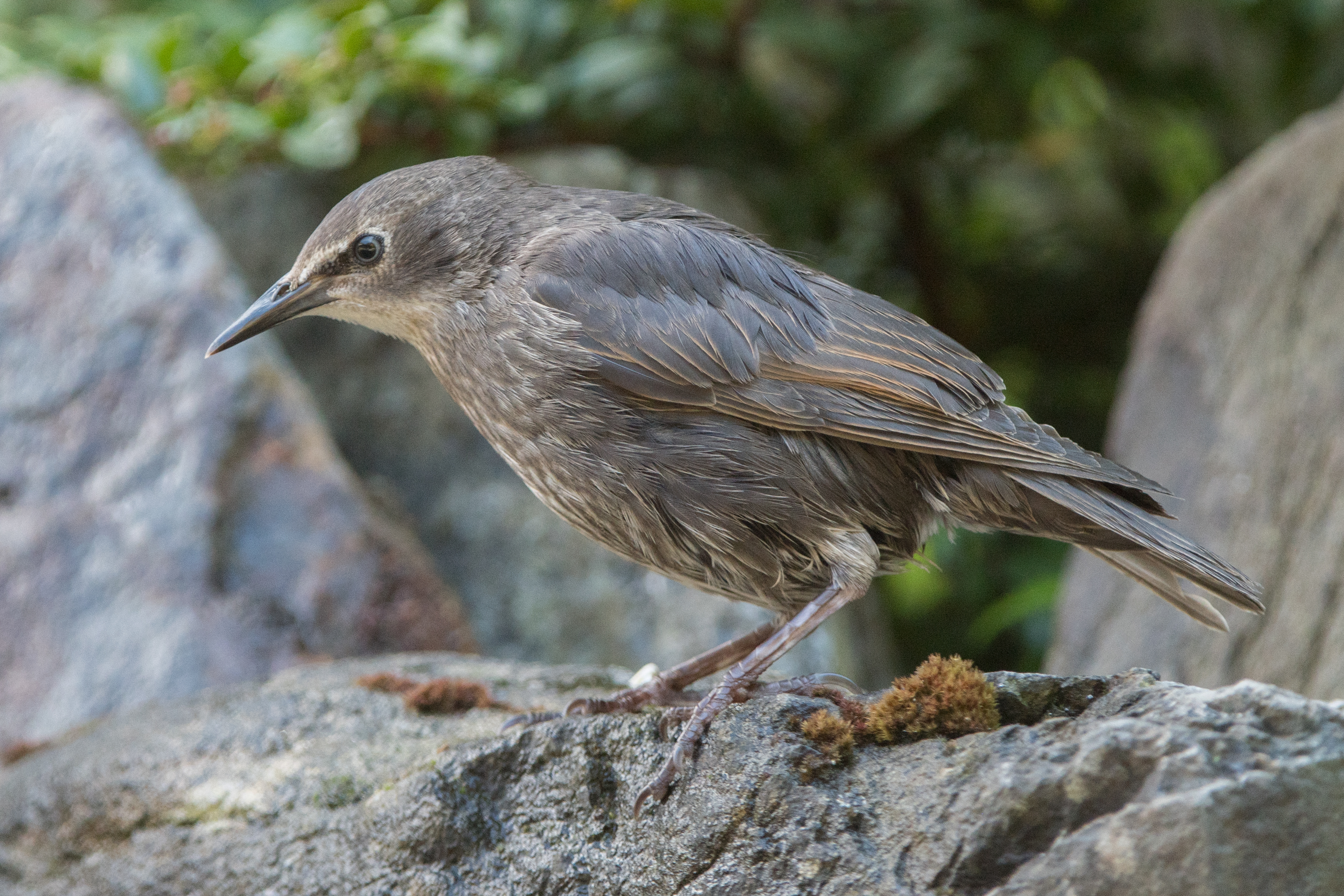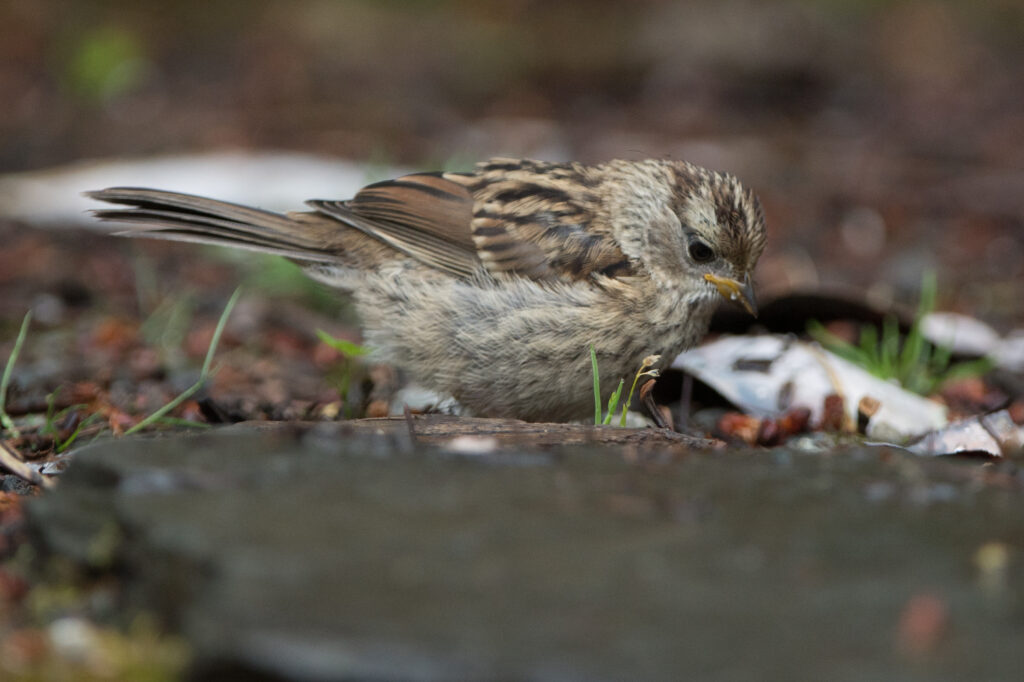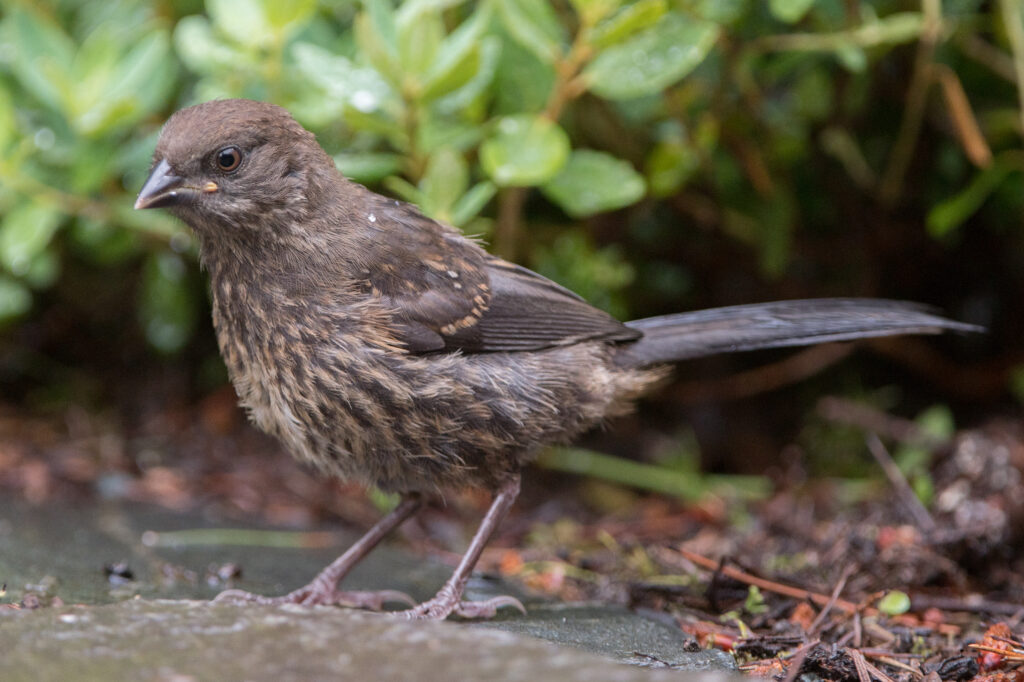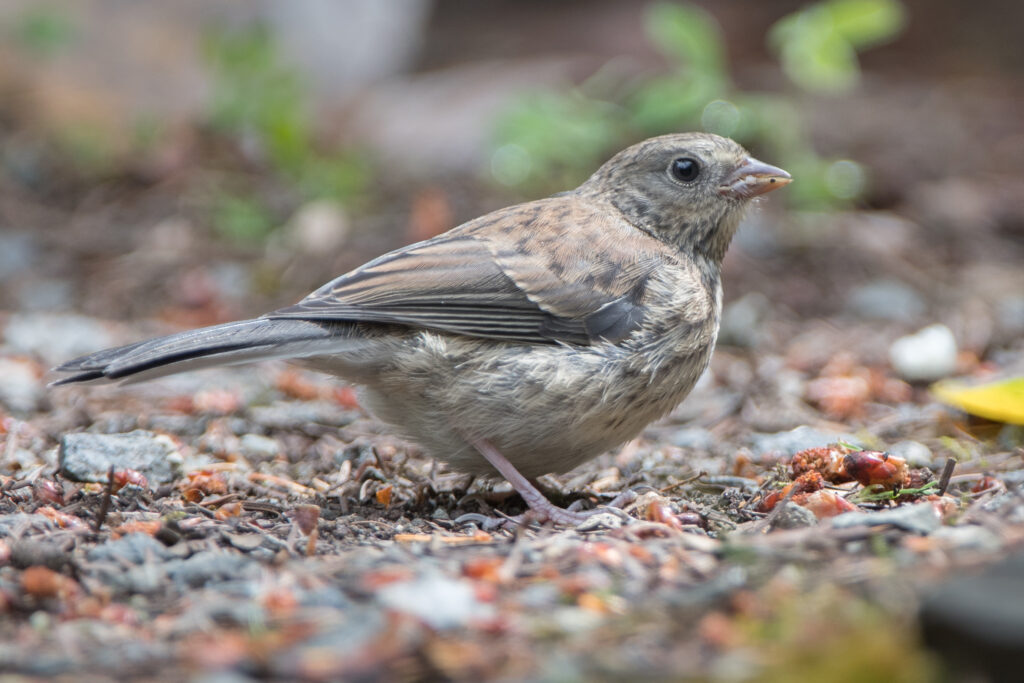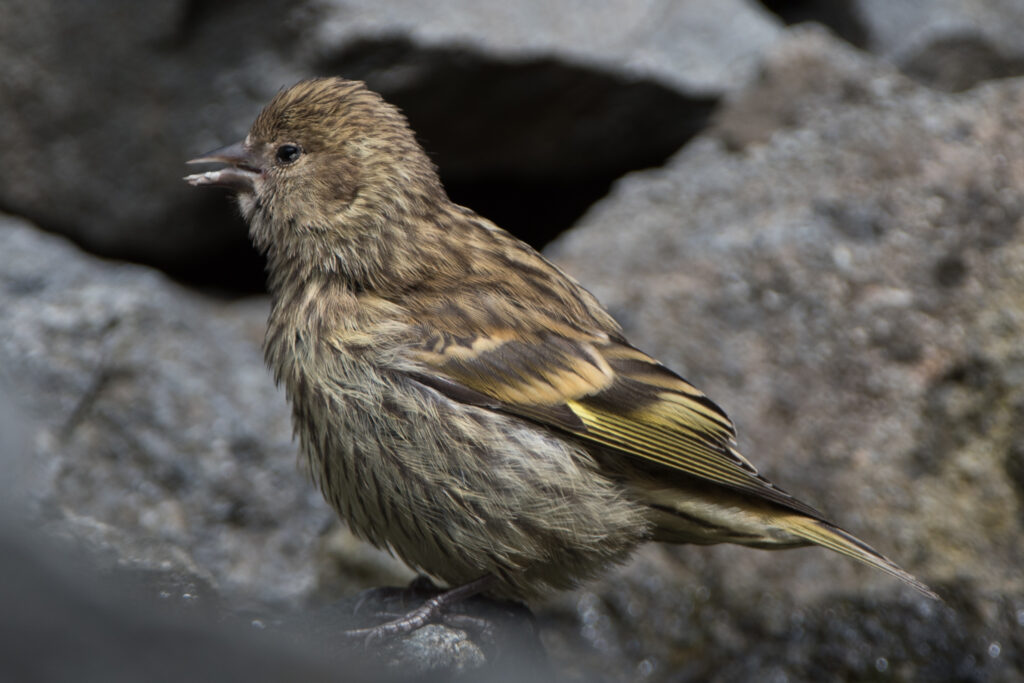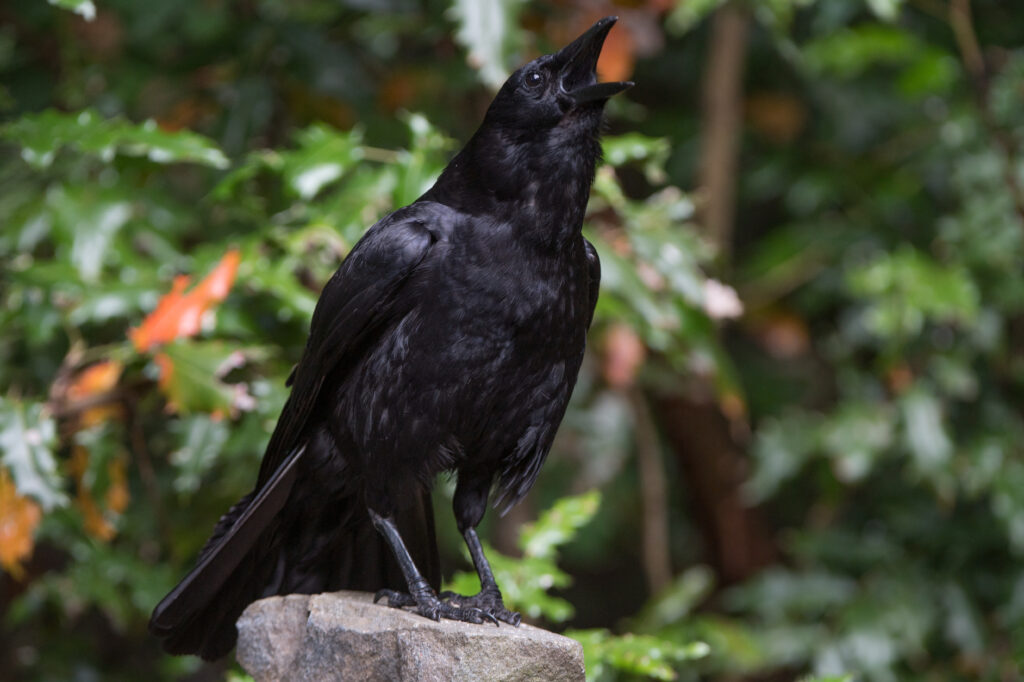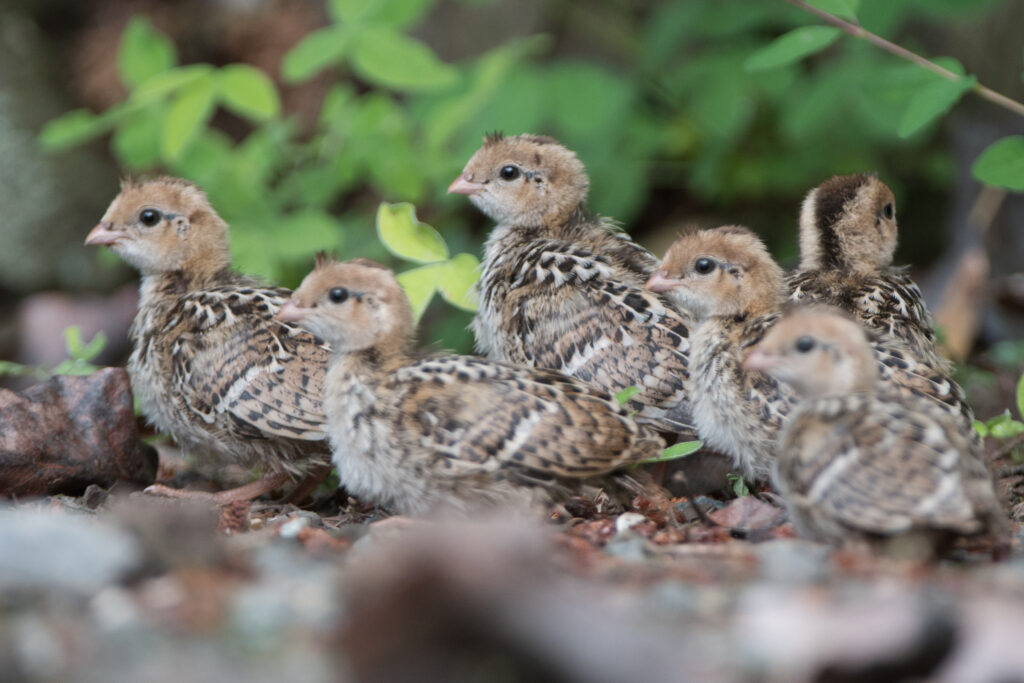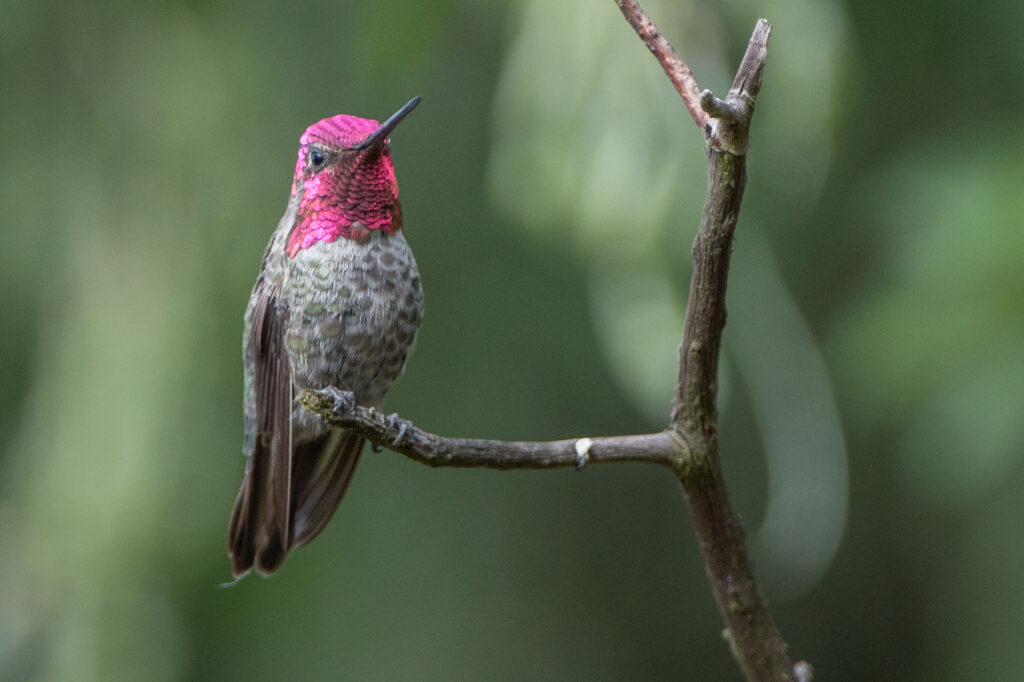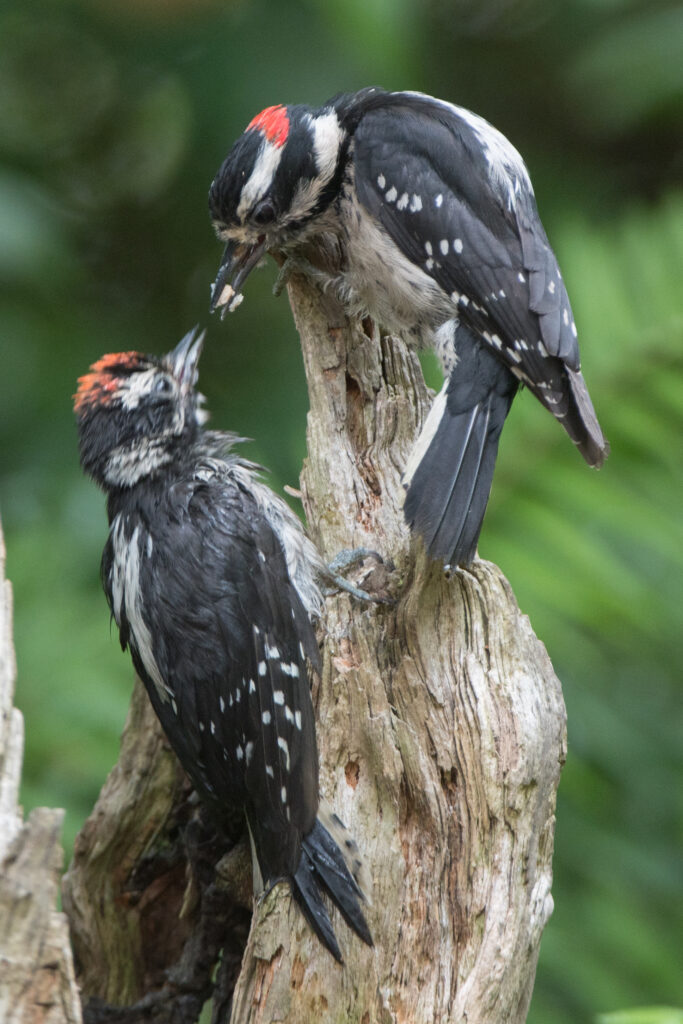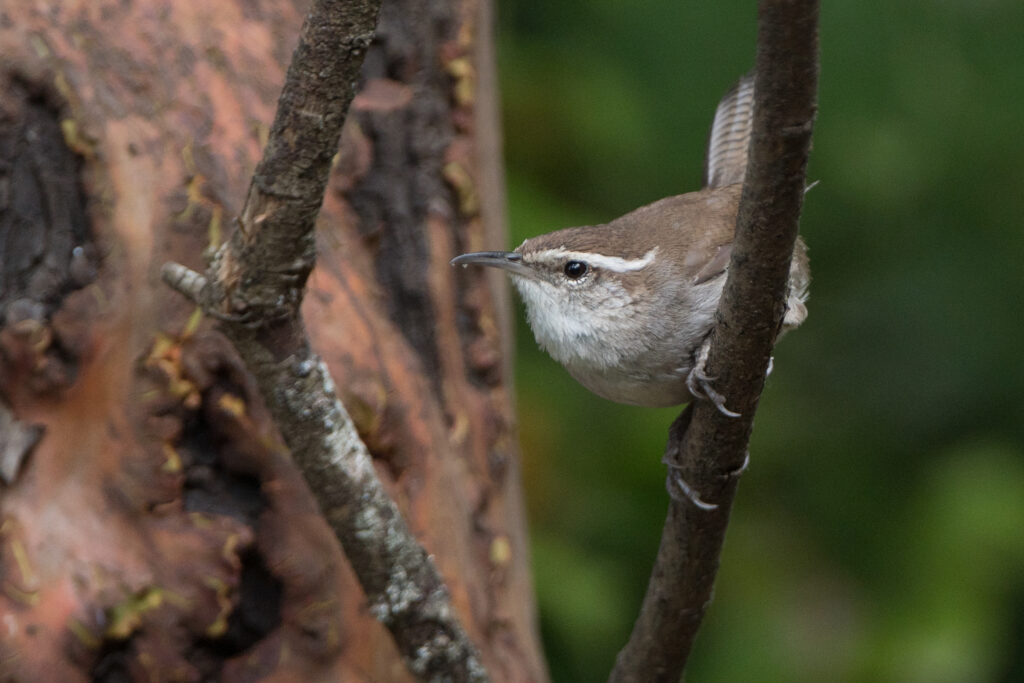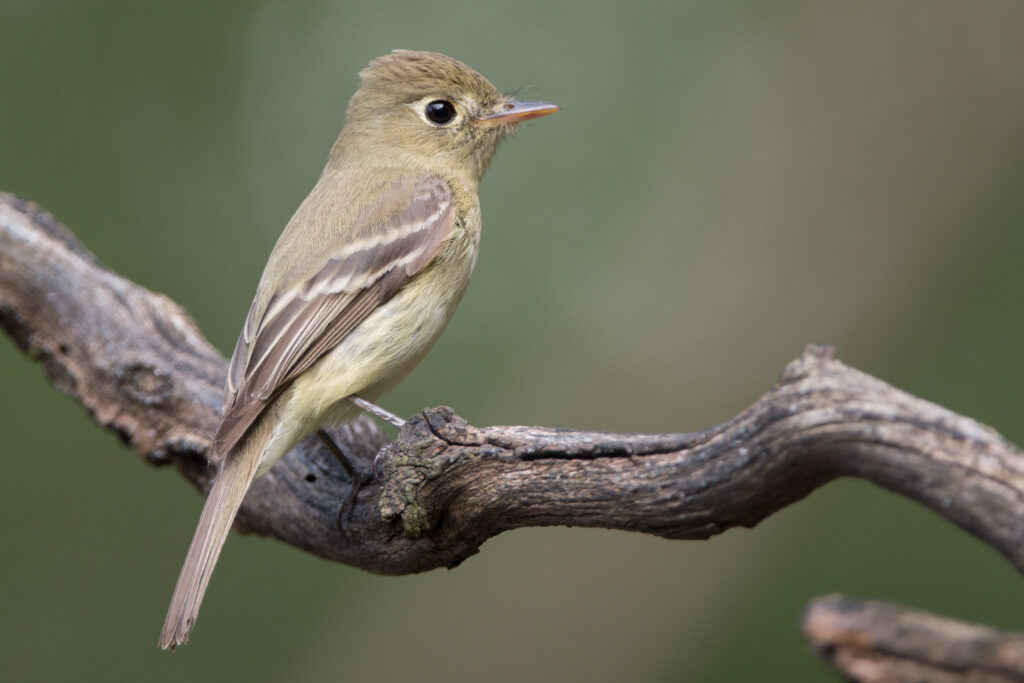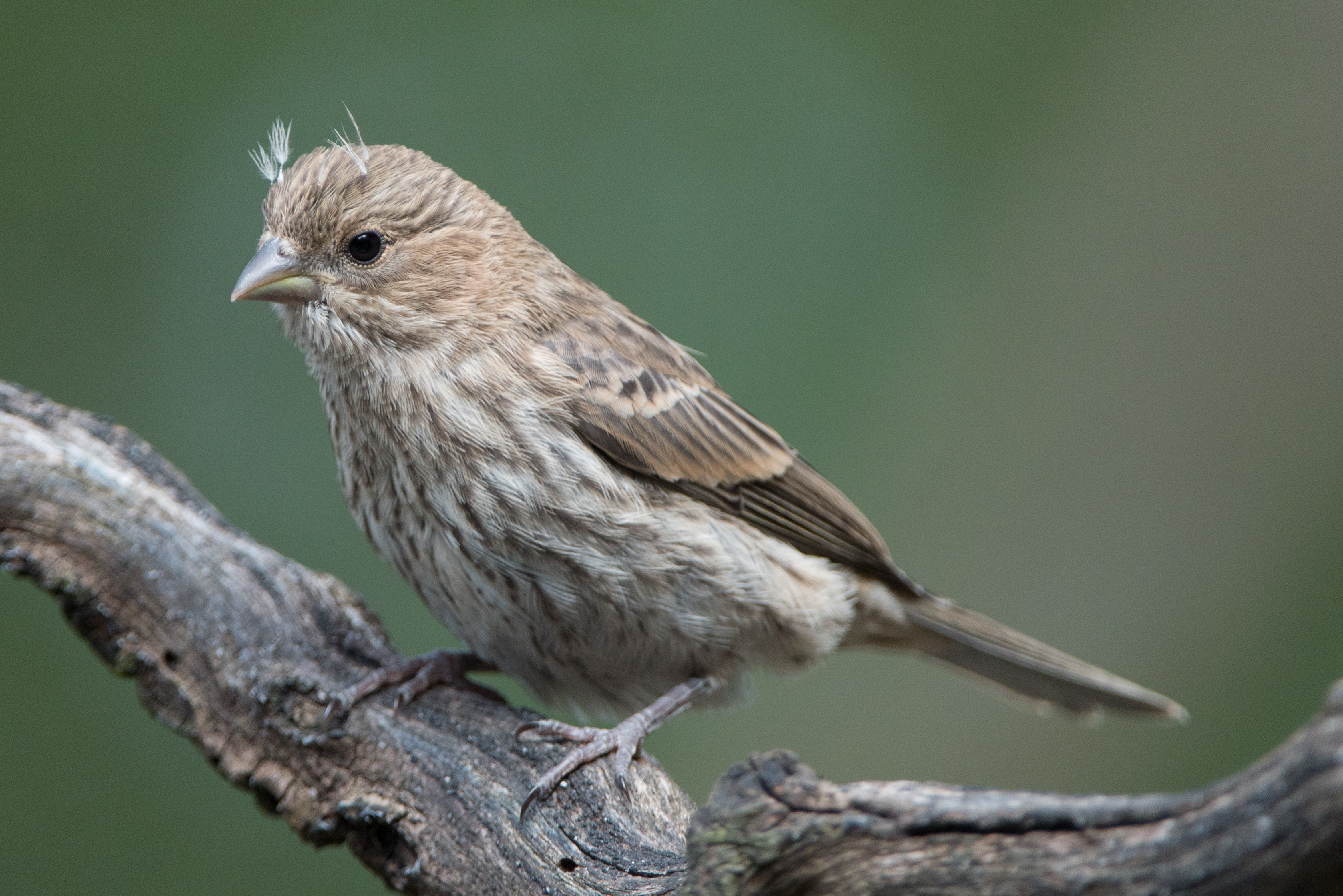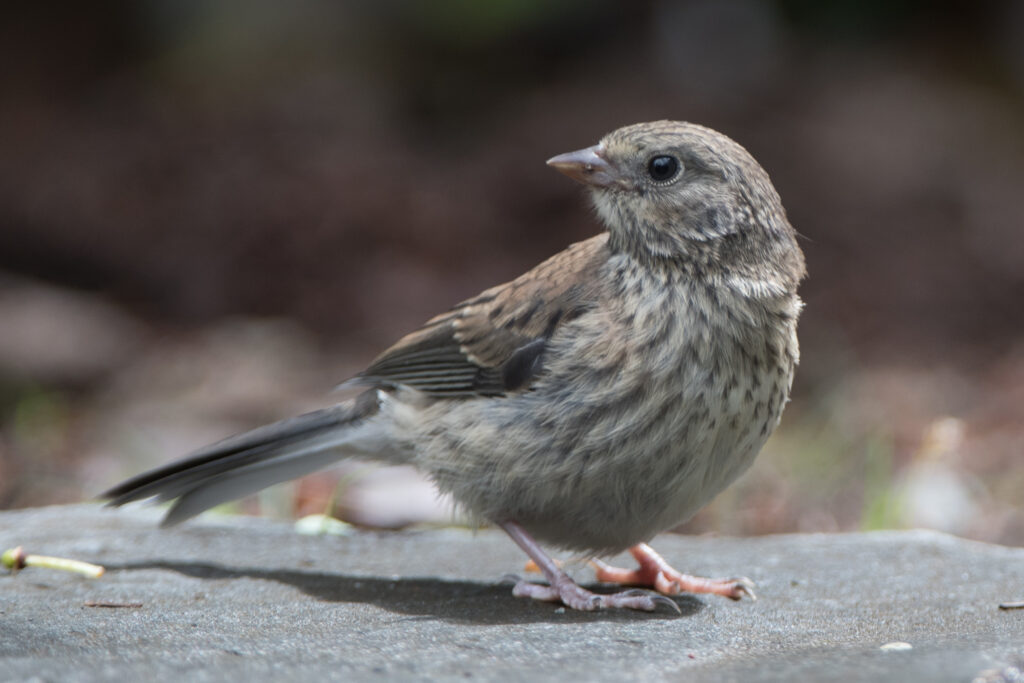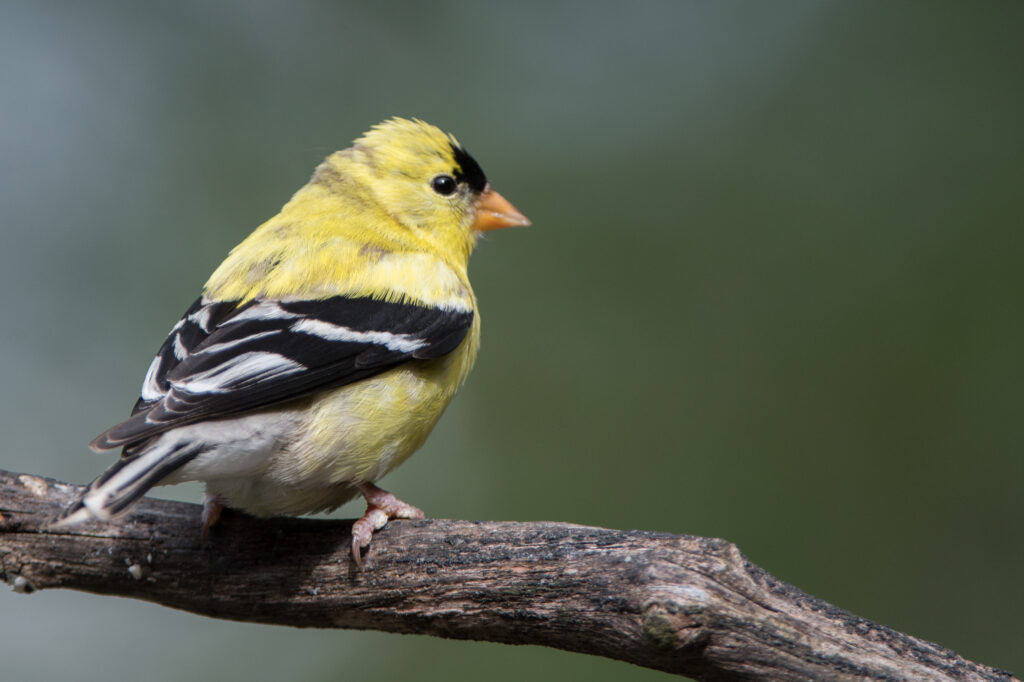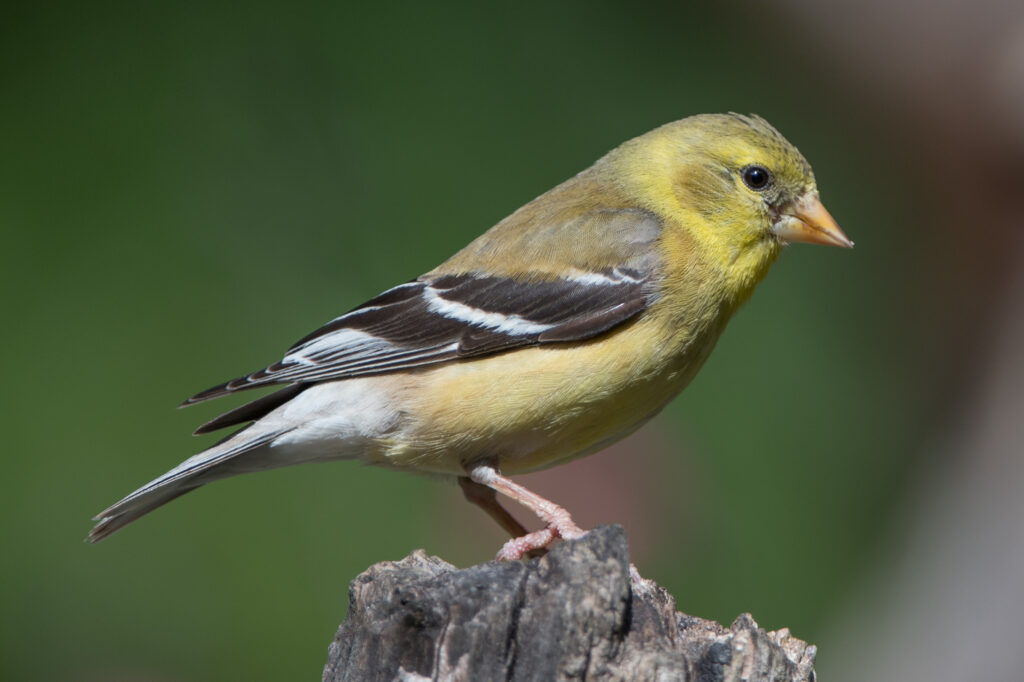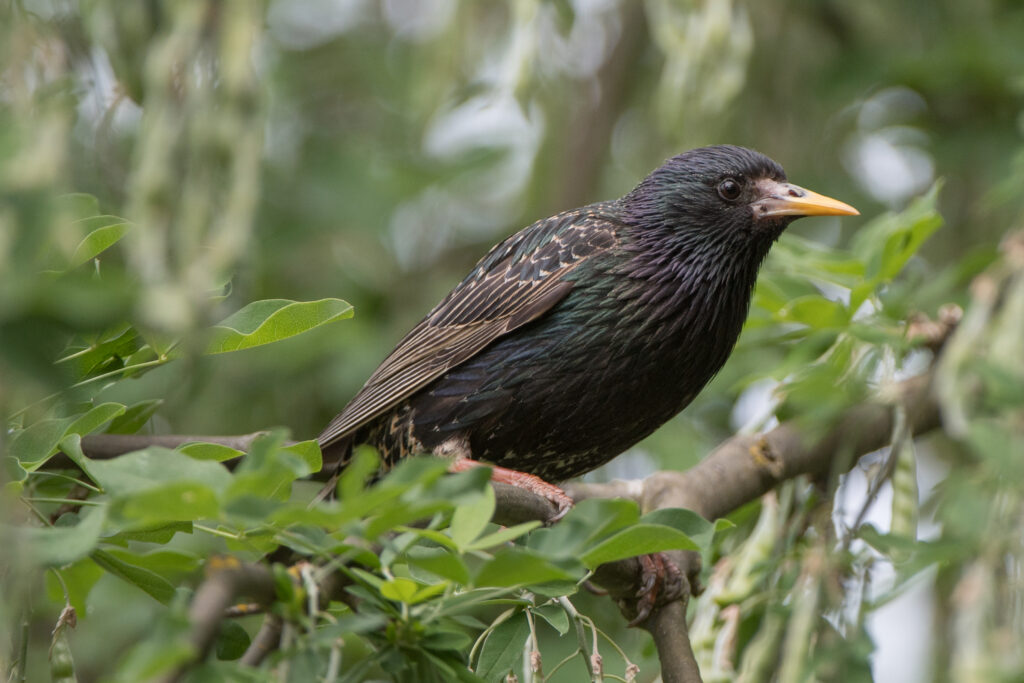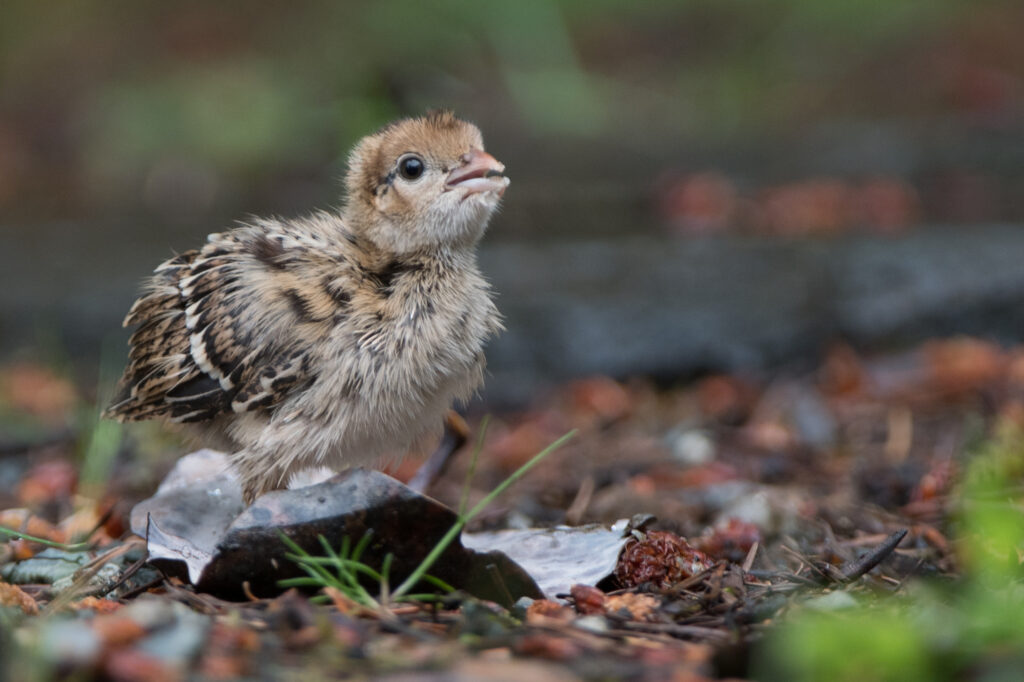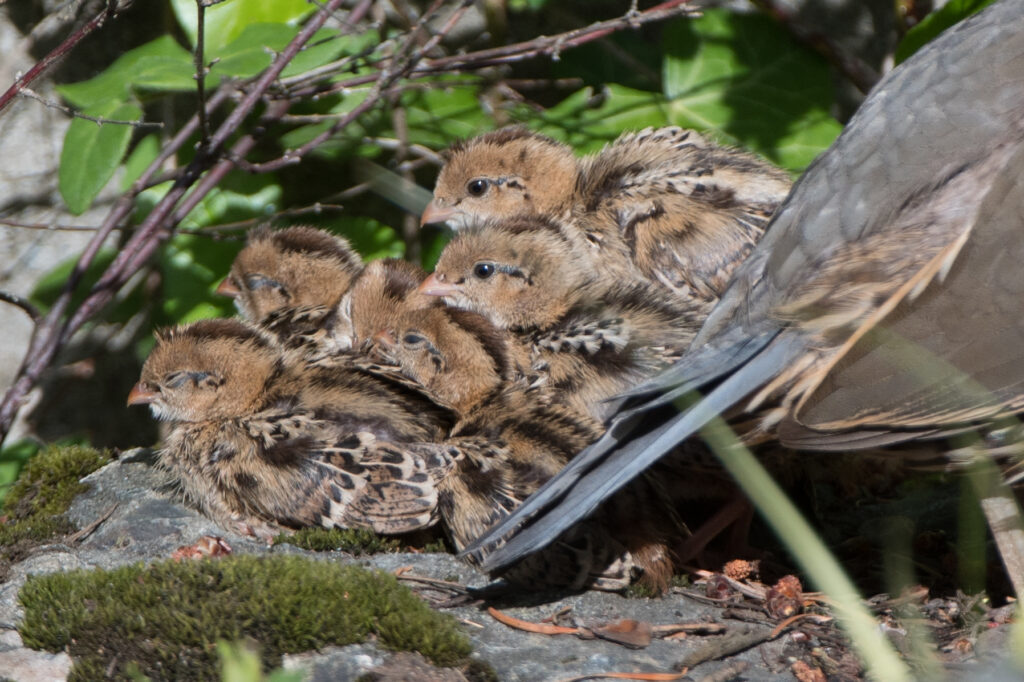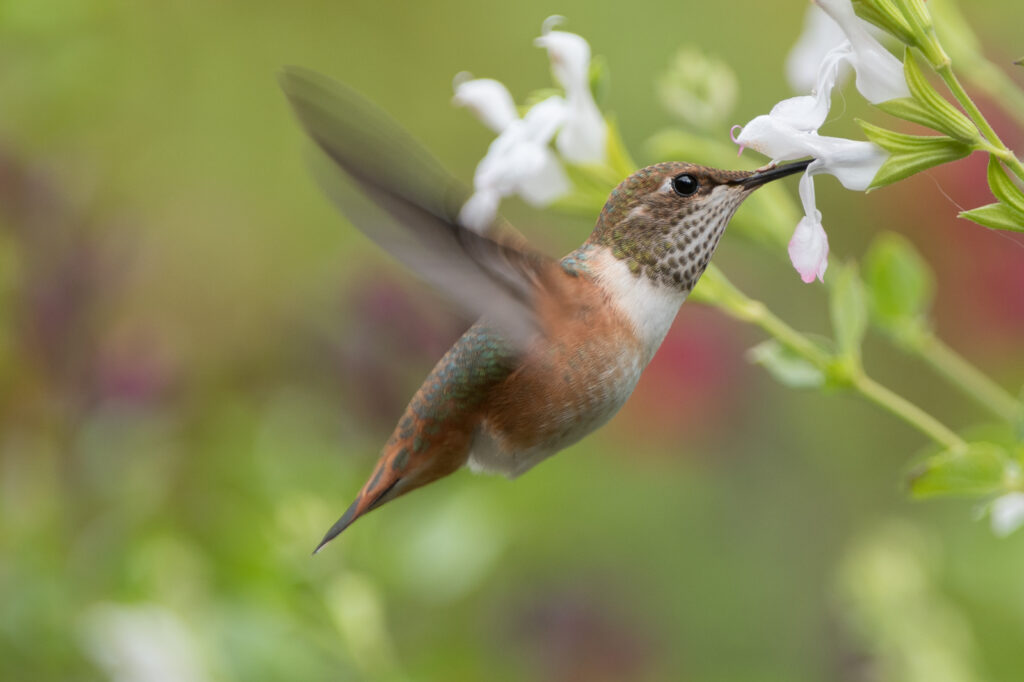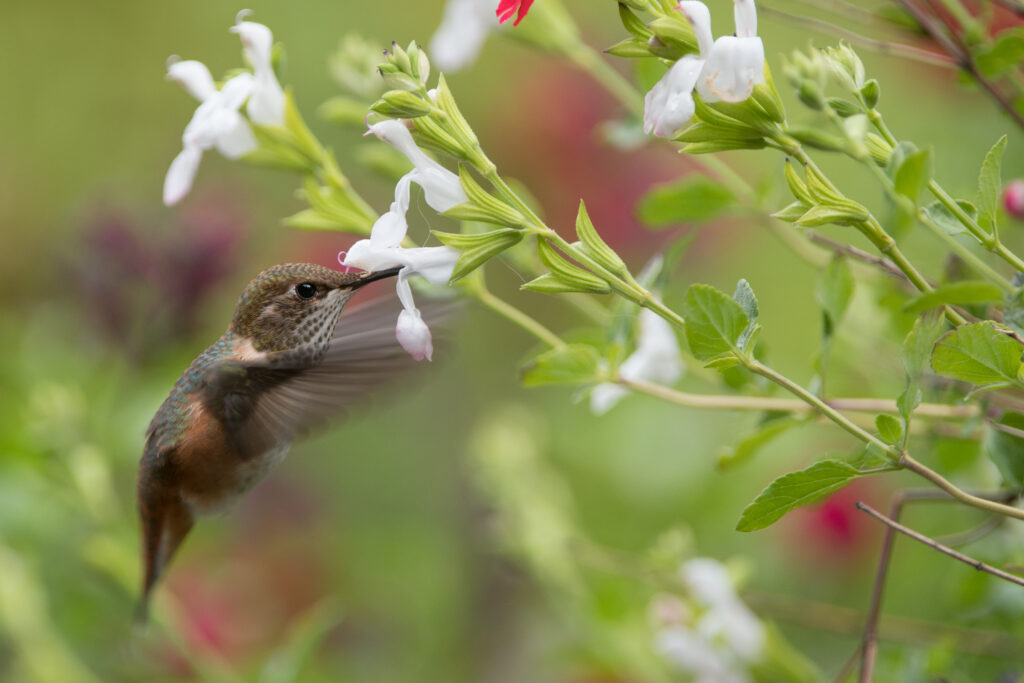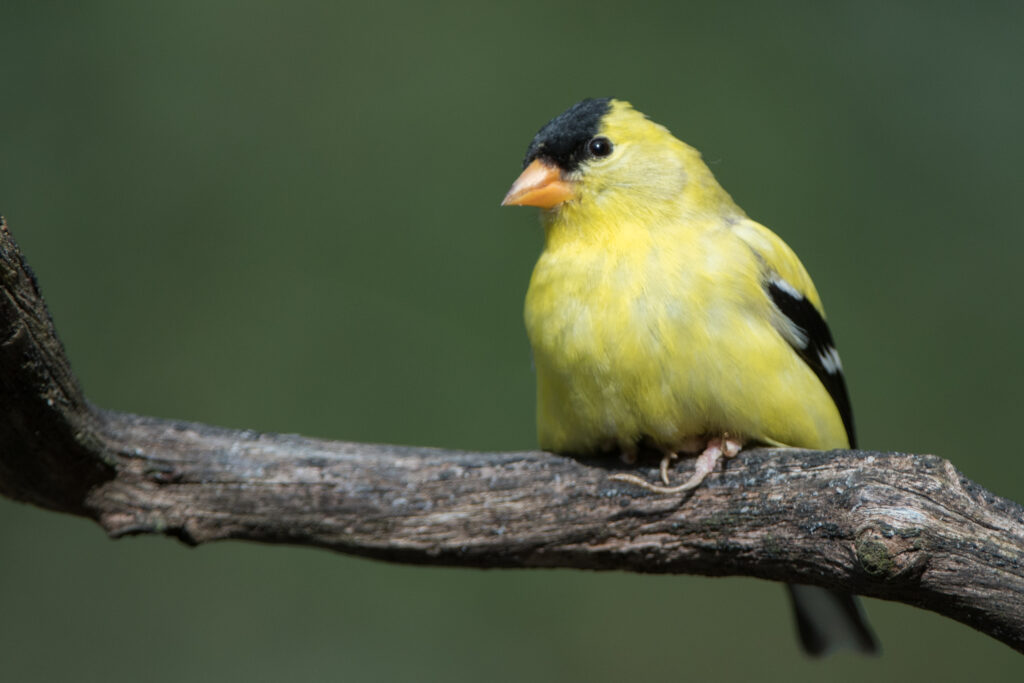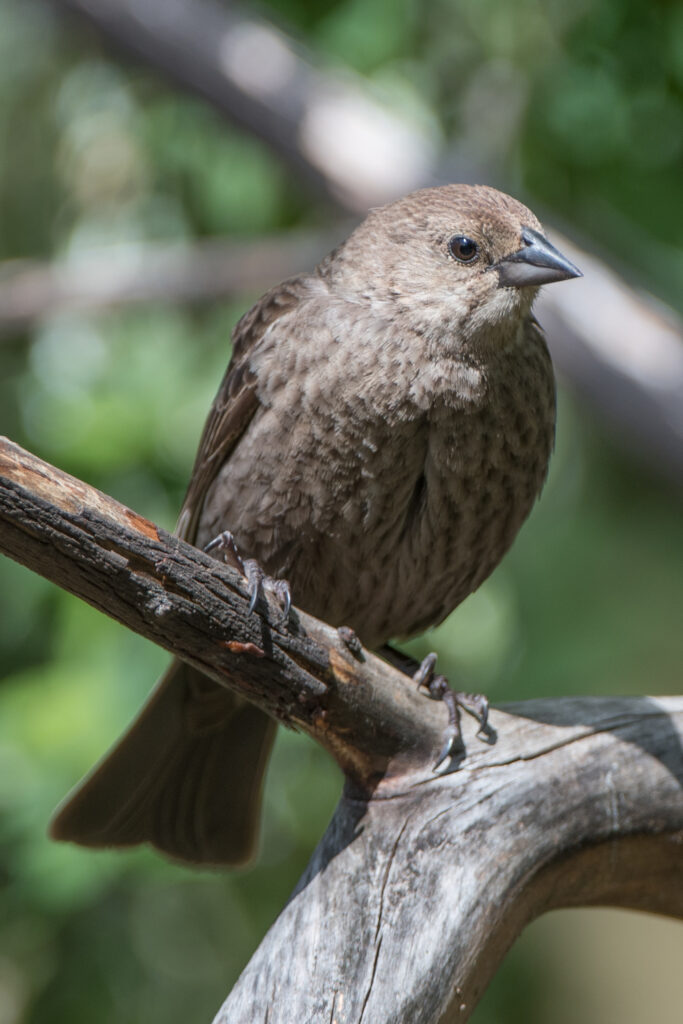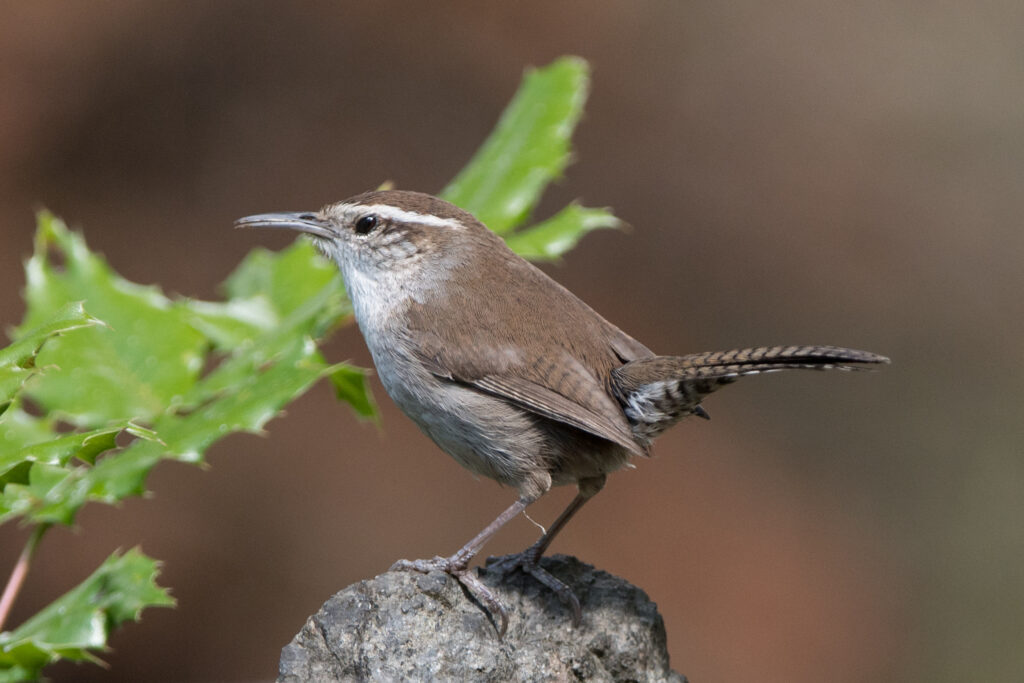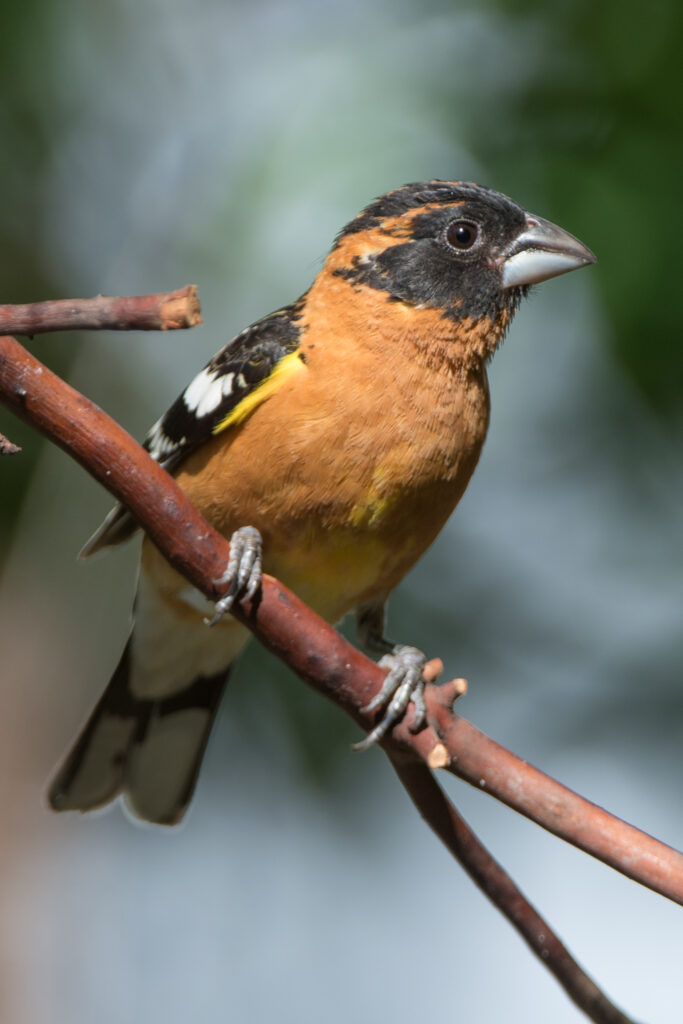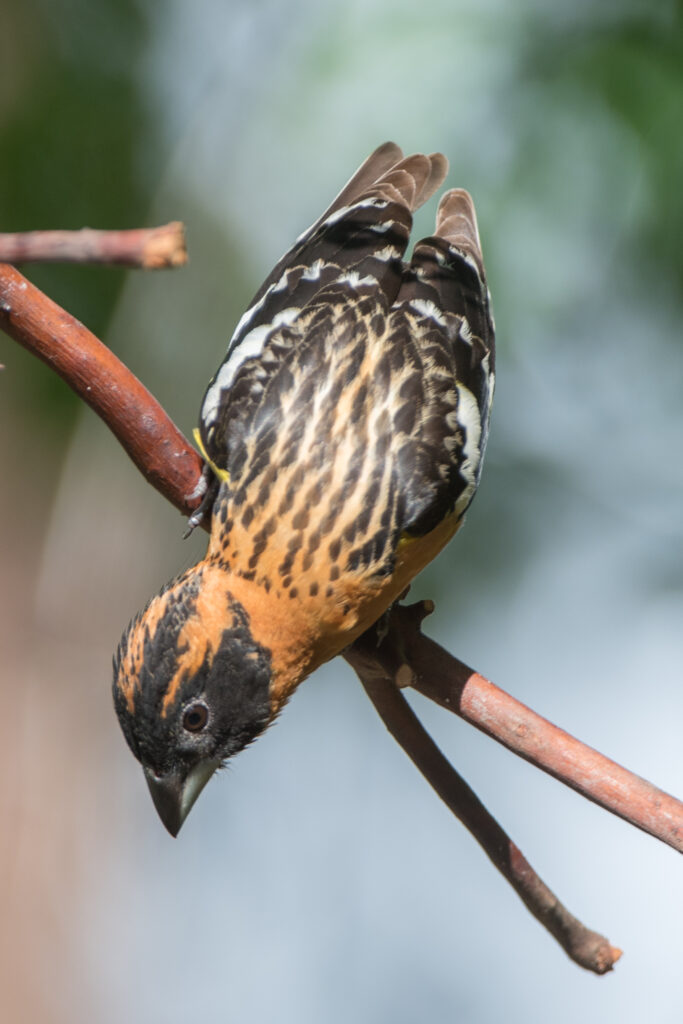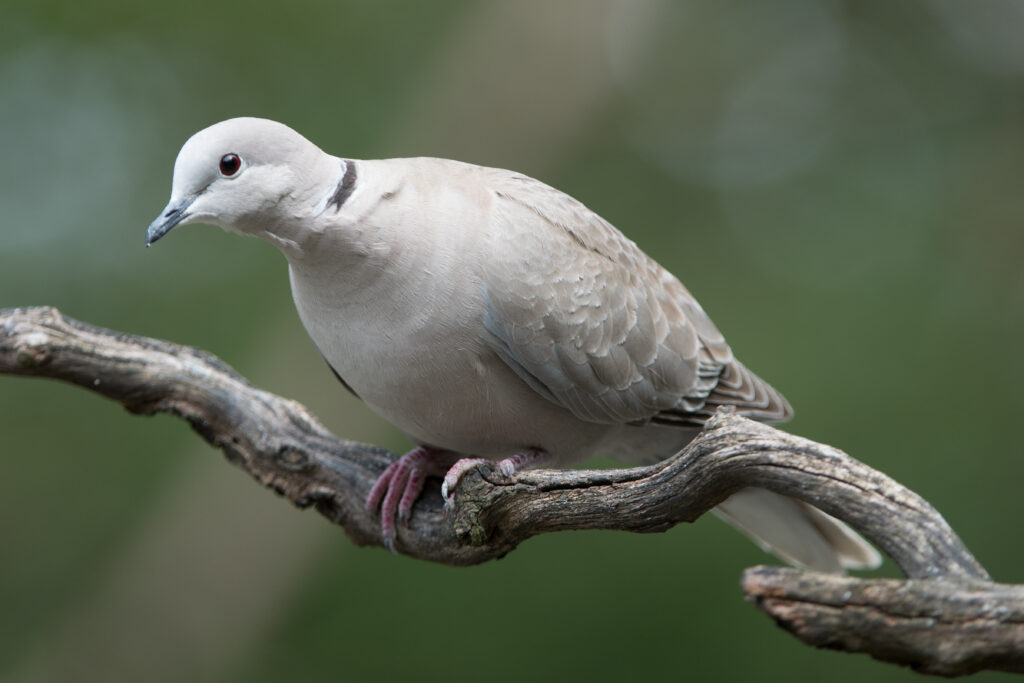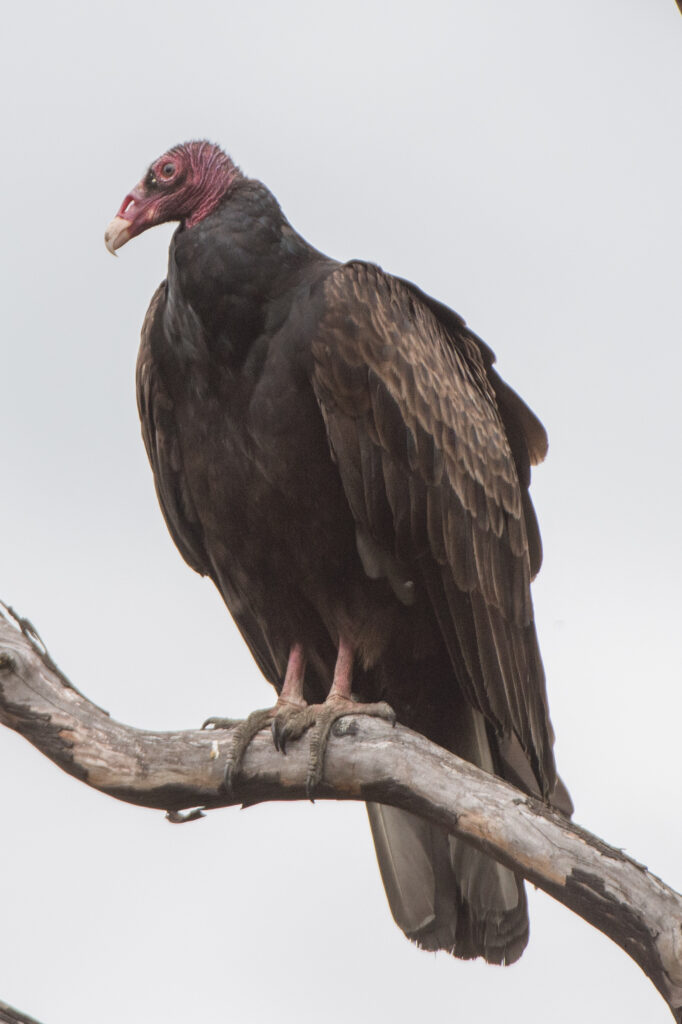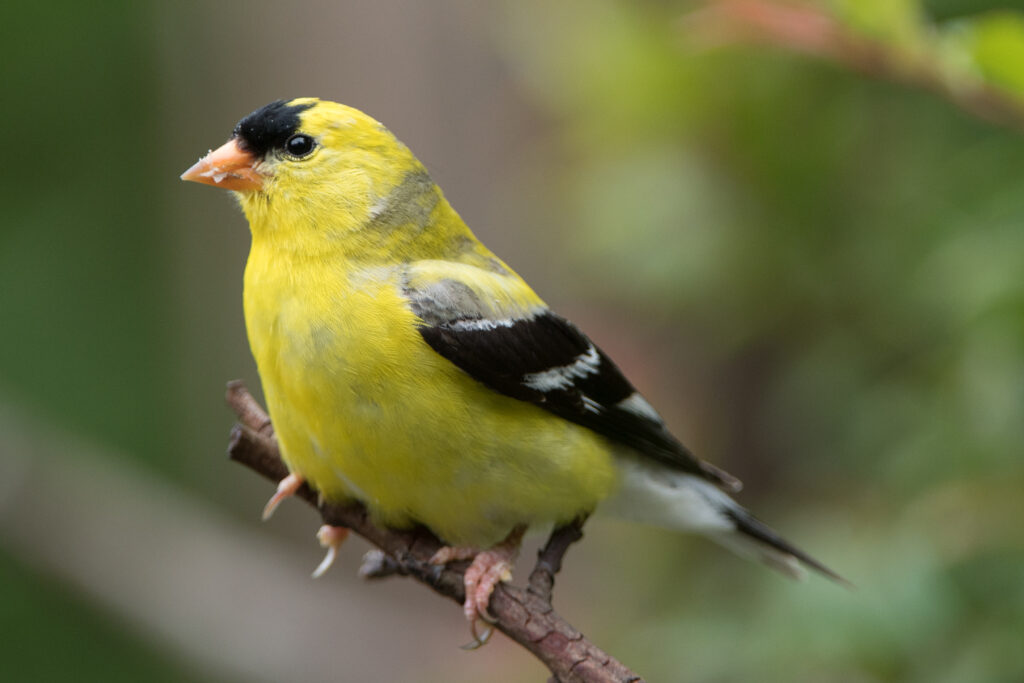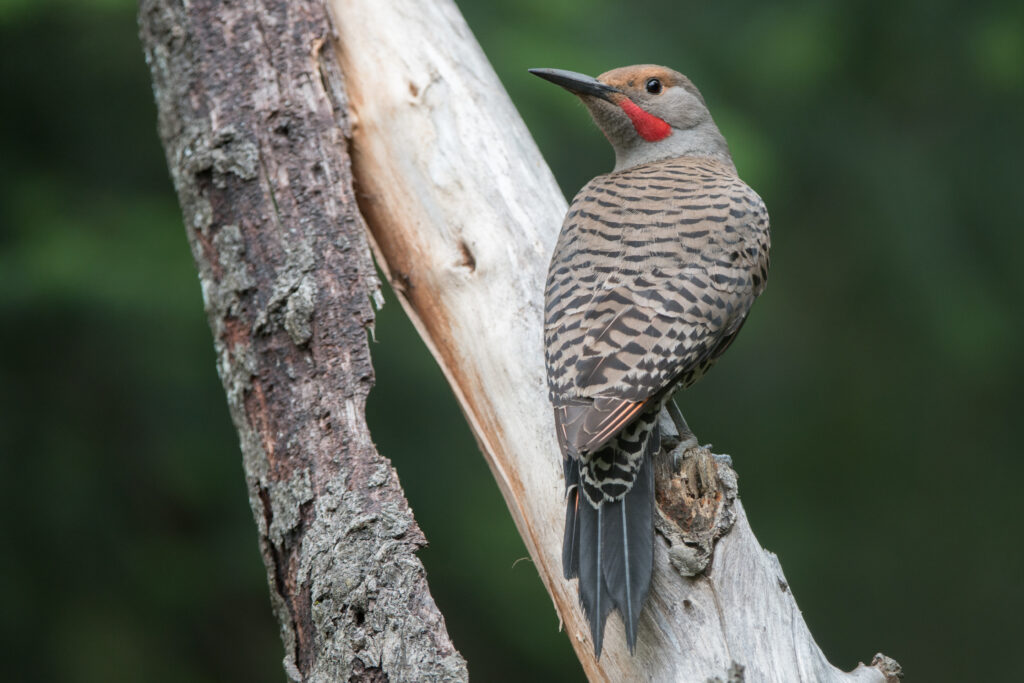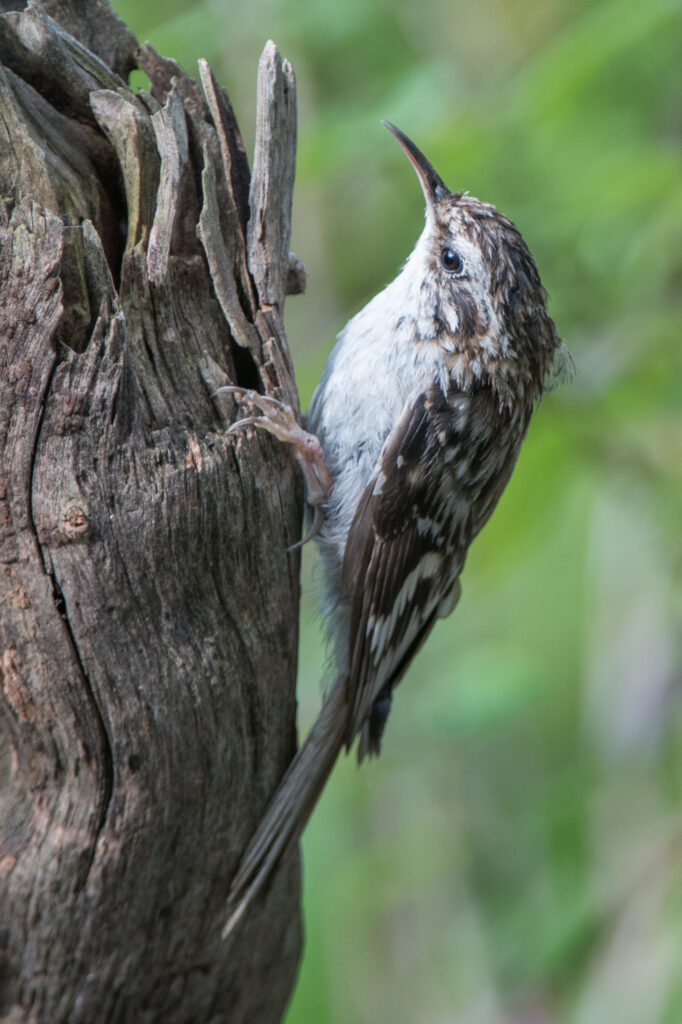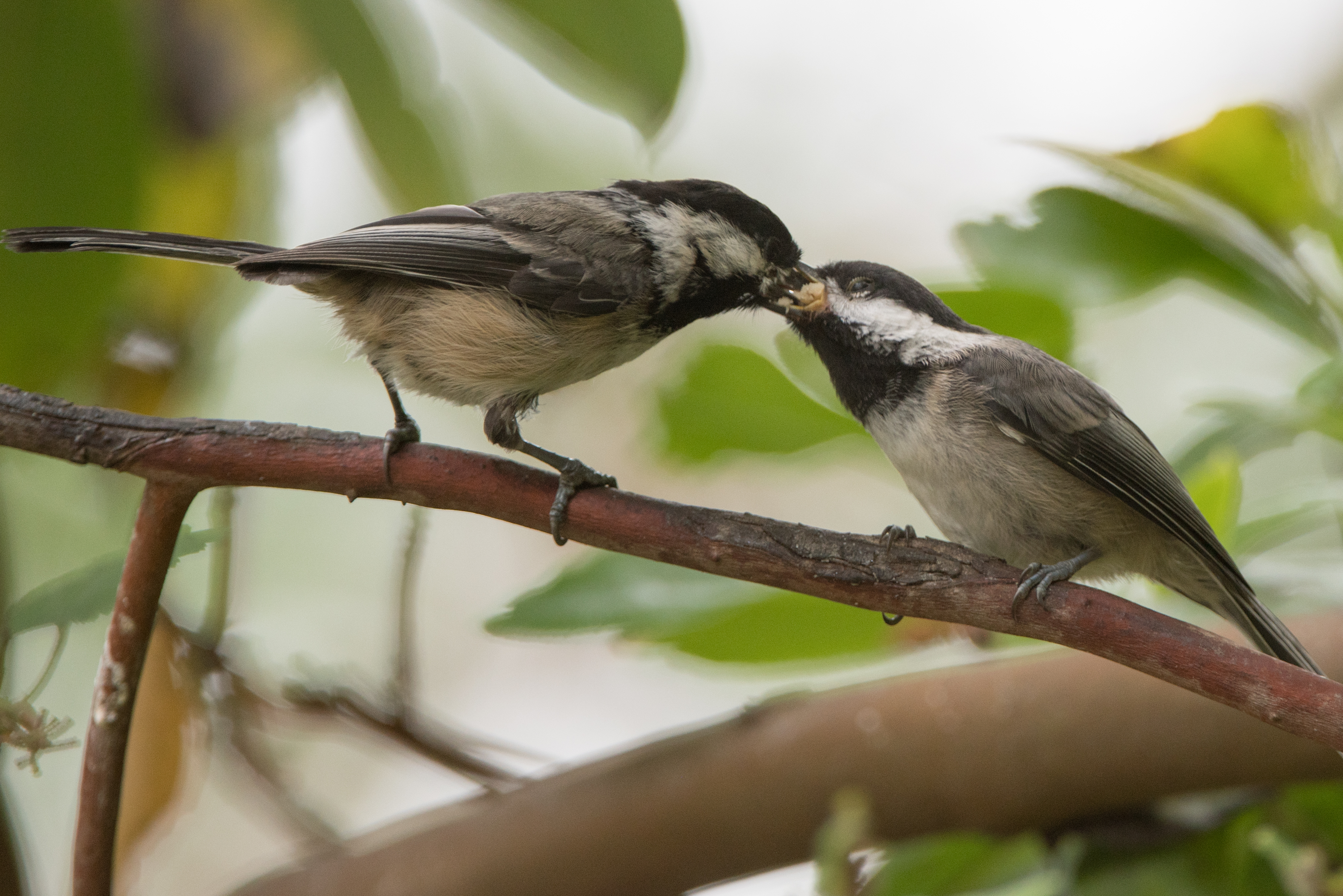First a little news. On June 17 I fell and broke my right ankle and just learned July 1 that I’ll be in a boot for three more weeks! Since it is my right ankle I can’t drive so I’m more or less restricted to photograph birds in the yard. On the other hand, I had a nice day in the yard on July 2. The day was cool and overcast, almost perfect for photography other than for a little mist that was falling around midday.
One of the most numerous birds in the yard now, in addition to American goldfinches, are chickadees. We have both species (Chestnut-backed and Black-capped) in the yard… this is a photo of one of the Chestnut-backed chickadees. I estimate that at times we may have as many as 10-12 in the yard at one time, the result of successful breeding seasons for both species.
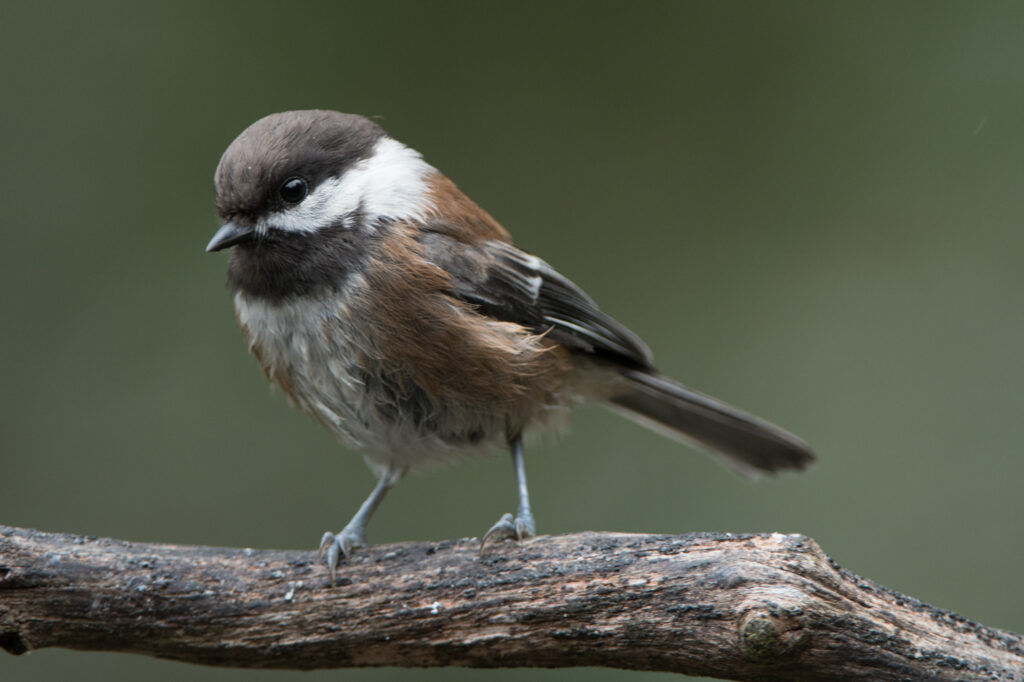
We have at least two Bewick’s wrens in the yard, and judging by the time that they’ve been flyng away with suet I suspect that they may have raised two broods.
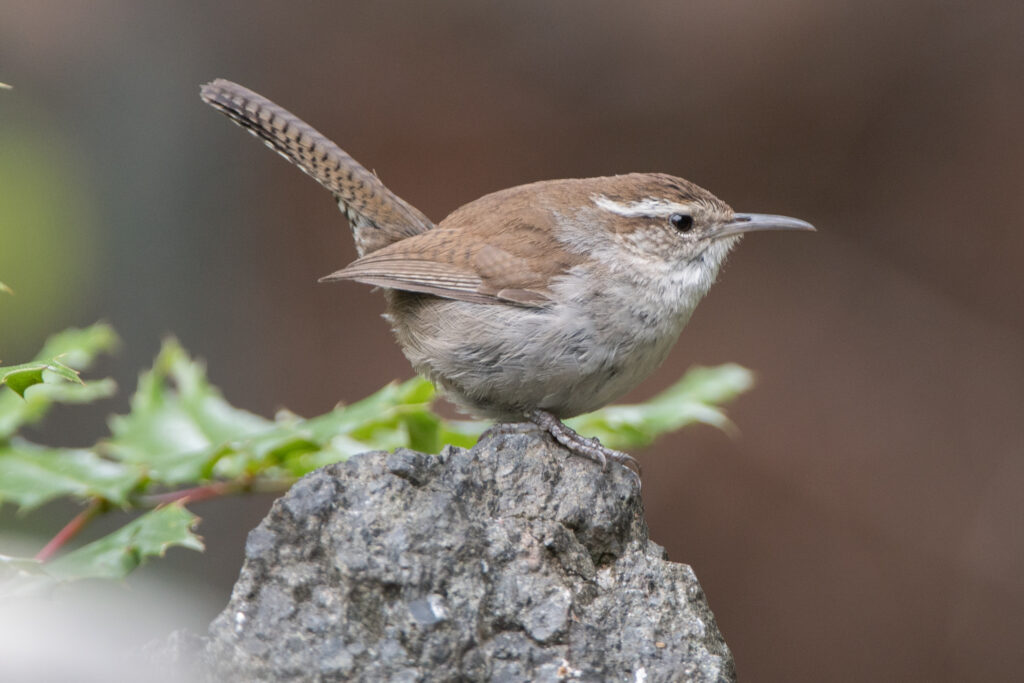
We’ve also has a successful breeding season for Downy woodpeckers. I’ve seen at least two juvenile males in the yard… unfortunately, we also had one killed when flying into a window.
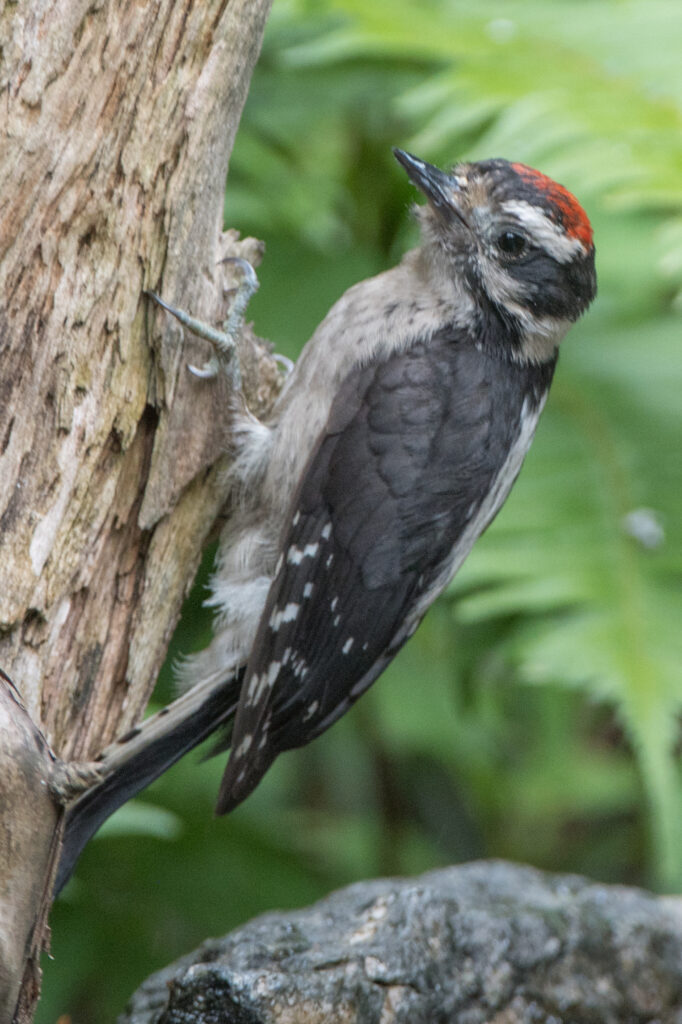
We are getting visits from at least two families of House finches. This male is rather at the higher end of the color spectrum.
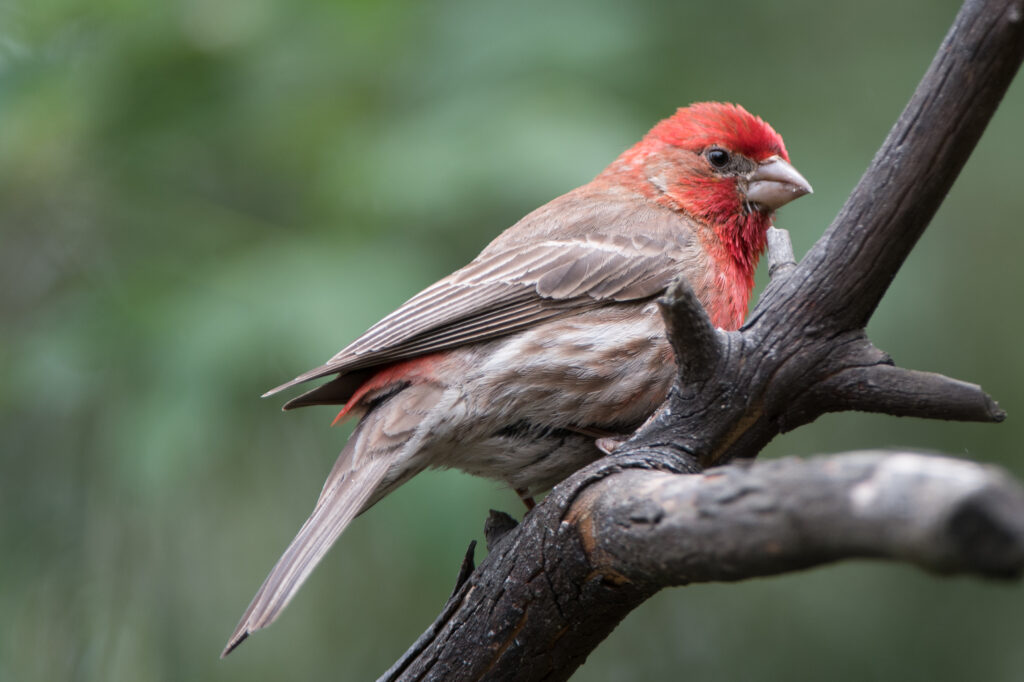
We have an adult male Northern flicker which has been accompanied by two juvenile flickers. This is one of the juveniles accessing one of our water features.
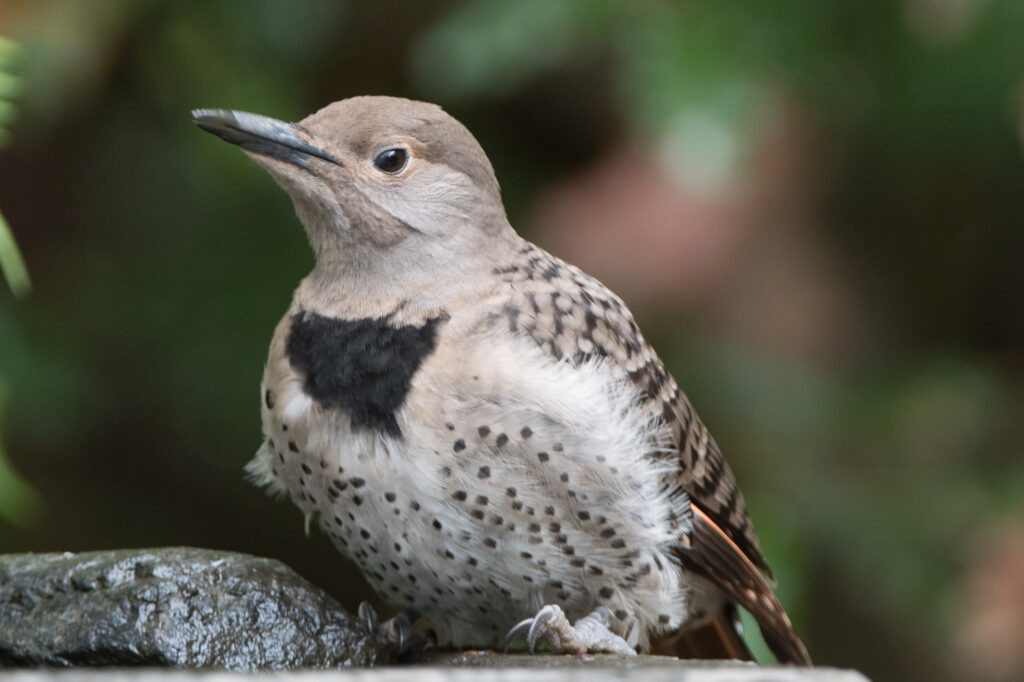
The American goldfinches seem to be taking somewhat of a break lately, with not as many in the yard. This is a female standing above the watercourse.
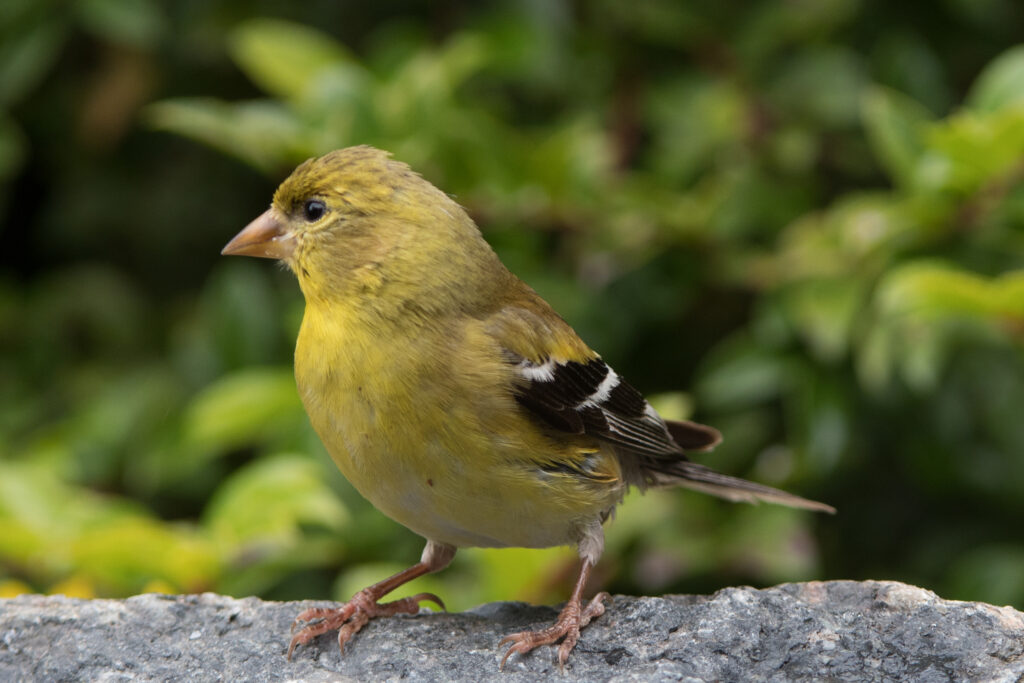
The visitors of the day were the following two grosbeaks which visited at different times. This male Black-headed grosbeak is a regular visitor to our suet feeder.
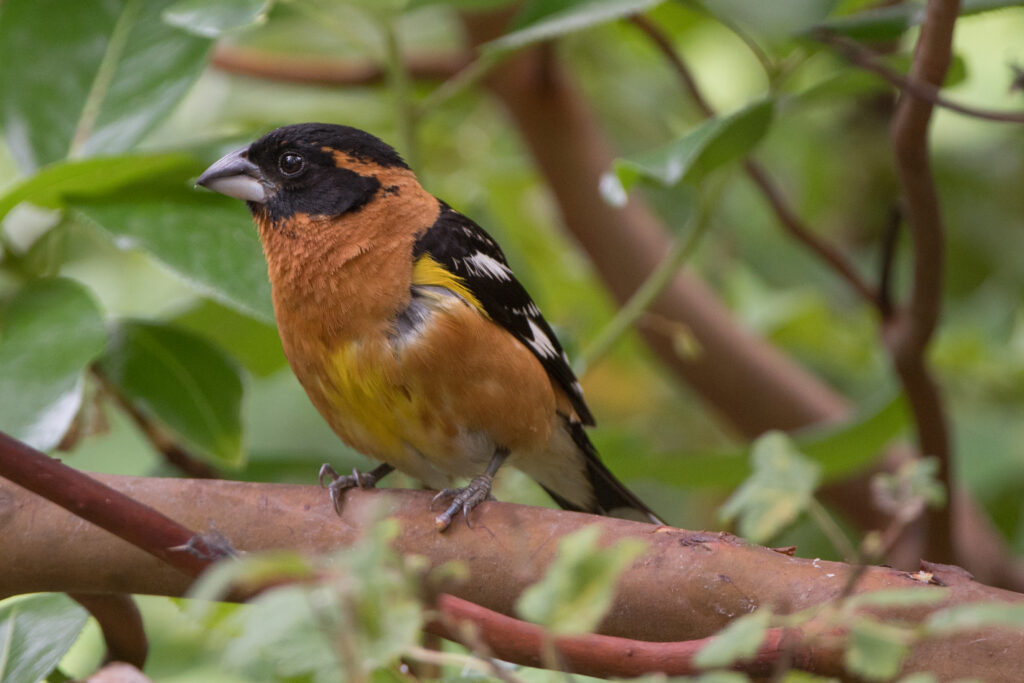
This female Back-headed grosbeak visited later in the day. I was sitting unusually close to our watercourse due to having to navigate with my boot when this female flew and landed directly in front of me on a staging stick above the watercourse. This was unusual for two reasons. First of all, the grosbeaks are among our shier species and this may be the closest I have ever been to one. Second, the grosbeaks don’t usually access our water features.
This female ignored the sound of the camera’s mirror and hopped from staging stick to staging stick and then down to the rocks of the watercourse to obtain a drink. I took numerous photos from only about eight feet away!
